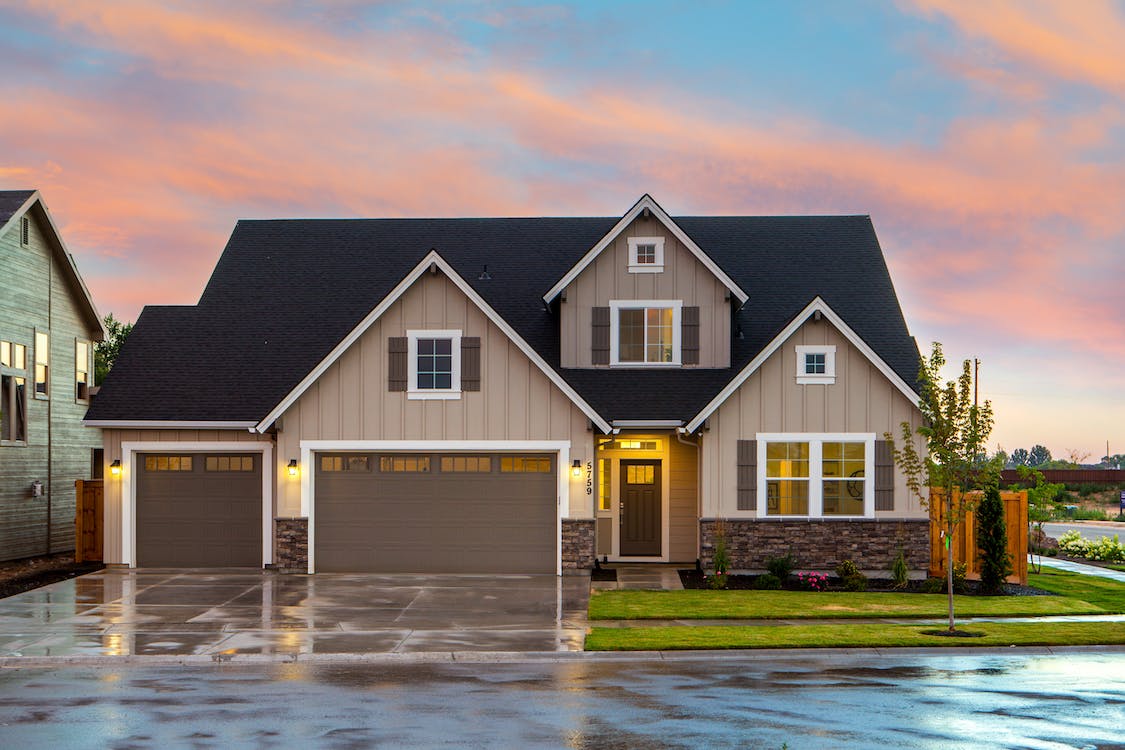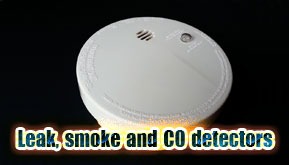The smart home is becoming a trend in the modern housing industry. Real estate agents and sellers today are using the term “smart home” in selling houses. More than a quarter of Americans are adopting smart home technology. But what is a smart home, really?
The ideal smart home is a house with built-in intelligence and automation from the start, wherein smart devices only add capability. However, most homes are built and currently designed with no anticipation of home automation support. Because of that, many smart home technology manufacturers designed their devices to only require outlets – raising the assumption from the public that homes only need to have outlets to support home automation technology. Basically, a smart home has automation systems that communicate to devices for remote control and monitoring.
The best example of remote work can be using Windows virtual desktop from a reliable desktop as a service provider to work remotely through any internet enabled device. Learn more about other smart team collaboration tools such as Office 365 business premium with O365CloudExperts.com.
Commercial real estate company Coldwell Banker and technology website CNET define smart home as “a home that is equipped with network-connected products (i.e., “smart products,” connected via Wi-Fi, Bluetooth or similar protocols) for controlling, automating and optimizing functions such as temperature, lighting, security, safety or entertainment, either remotely by a phone, tablet, computer or a separate system within the home itself.”
Smart home technology intended to make living more comfortable, advanced and effortless – which are all advantages of the Internet of Things. Two decades ago, a porch light timer may be considered as smart home technology, but things have changed a lot now. The devices for smart homes have become more affordable, albeit still expensive for most people, but it shows that owning a smart home isn’t limited anymore to billionaires and business tycoons.
Smart home systems generally consist of sensors and switches connected to a central hub from with the system is controlled with voice automation, or a user interface interacted using smartphone/tablet app, or a web interface that is often via Internet cloud services. The usual method for controlling home automation is the Wi-Fi. You need a high-powered and reliable Internet connection because the more devices you are going to connect to your smart home system, the more congested your Wi-Fi network will be.
The most basic and practical benefit you can get from owning or upgrading to a smart home is energy saving. As the user has total control over appliances, household items that use energy can be automatically shut down when not needed. Smart homes can also recognize when a house or a room is empty, so it can turn off those appliances that are not in use. Here are some of the features found in a smart home:
1. Home security
If you need increased security and ease of access, you might consider using a smart lock for your home. A smart lock will not only enable you to lock and unlock without needing keys for better security; it can also monitor who enters and leaves your house with the help of its motion sensors. Some smart locks
simply let you use your smartphone to open and close doors; while some allow you to assign special privileges to family and friends. Some can be activated by voice commands or triggers from other smart home systems and devices.
Smart home locks can alert you when there is an unwanted intrusion and it’s also a great help for monitoring your kids once you’re away from home. If there has been an intrusion when you are not around, some models can let you trigger a siren or alarm (if you have it connected at home) using an app to notify people around your household. By the way if you get locked out be sure to check out locksmiths on emergency calls as an option.
2. Lighting control
Smart lighting adds convenience, ambiance and energy efficiency to your home. You can turn off the lights with one word or press on the app without needing you to get out of your bed. You can also adjust the mood of the room with ease. Lights in smart homes can be controlled using smartphones or voice commands. Some can smart lights “learn” when and how long you use lights and automatically adjusts itself to it. Others can be pre-scheduled so that it would turn on and off during the times you set.
3. Heating, ventilation and air conditioning
Smart thermostats can “learn” your behavior and preferences, then predict and set the temperature as you wanted. Through various sensors, this smart technology can set the optimal temperature for your body to ensure your comfort. It can heat and cool only the rooms that are occupied to save energy and notify you if the level of humidity is high to keep you from being sick. When no one’s around, these systems will automatically turn off or operate in an economy mode, depending on your settings. Of course don’t forget about other maintenance tasks for the home like guttering, AC, etc.
4. Control of appliances and other household items
There are several smart appliances, such as washing machine that notifies you via phone when it has finished spinning, oven with a built-in camera that allows you to check how your food bakes and roasts via an app, refrigerators that update you when you are running out of ice or milk, and coffee maker that automatically makes freshly brewed coffee once you get out of bed in the morning. There are also smart blinds and curtains can be controlled individually or in groups, and some can close automatically as the morning sun hits the bedroom window. Automated music playing is also integrated into some smart devices like speakers and lights. The aim of all smart appliances and items is to make things more convenient and comfortable for the homeowner.
 5. Leak, smoke and CO detectors
5. Leak, smoke and CO detectors
Smart home technology can also help you prevent disasters at your household. A moisture sensor can alert you if there is a water leak at your home, giving you time to make or ask for repairs before it worsens. Smart smoke and carbon monoxide sensors can notify you anywhere using your smartphone which has an Internet connection. You do not have to spend a lot and buy a restaurant hood suppression systems, just make sure you have a decent system in hand.
6. Automation for elderly and disabled
The elderly and the disabled can be helped by the smart home system by collecting data from their body conditions such as heart rate, temperature, respiration and other functions so that it can be easily monitored by their physicians, even from the comforts of their home. They can reduce their sense of isolation with the help of smart home systems that can automatically connect them to the Internet with other elderly and disabled individuals. There are also reminder systems that are connected to the Internet and can make announcements at home through an intercom. Additionally, smart homes can adopt medication dispensing devices to ensure that medications are taken at the right amount during appropriate times, as well as spoon-feeding robots to help those that are unable to eat on their own.
7. Pet care
When you are out for days or weeks on a vacation, you no longer have to worry about your pets as long as you have a smart home system for them. With the use of the technology, you can feed your pets with pre-set time and date and you can view if they were already fed on a screen.
Overall, the smart home technology is fragmented and connectivity is a confusing jumble for the average consumer. Platforms or protocols in the market abound, including Nest, HomeKit, Zigbee, Z-Wave, SmartThings, Universal Power Bus, Brillo, and Wink. Each one is its own language, and each language communicates to the connected devices and instructs them to perform a function. Choosing might be overwhelming but big tech companies such as Google, Amazon, Apple, and Samsung are offering controllers that are compatible for most smart home platforms, and many smart home devices work across multiple platforms, so it might be the least of your concerns.
However, the smart home is lacking technical standards. Before, systems are sold as a complete package wherein a customer relies on one vendor or manufacturer for the entire system: the protocol, the hardware, the central hub, and the user interface. Due to the variety of choices and increased compatibility between platforms and smart devices nowadays, owning and using a smart home system can be complicated.
Like other newly-introduced technologies, the smart home systems are not immune to loopholes. One of the main concerns for consumers is its questionable cyber-security. Once a device is connected to the Internet through a Wi-Fi network, it is susceptible to hacking. When a person’s highly monitored Internet of things home is hacked, the hacker would know a lot of things about the homeowner, making him vulnerable to well-planned burglary or other crimes. Another issue is an invasion of privacy. For some devices, information is stored in a cloud owned by the device’s company. The company, then, communicates to the device to perform a function, so the person’s data can be controlled by someone else.
Application of smart home systems and devices is still low, with only one out of four Americans owning a smart device in 2016. Consumers are concerned with the high expenses of ownership and maintenance of the technology. Operating systems and applications always need upgrades for security and ease of use, so older and lower-priced devices can be vulnerable.
Consumers are also wary of abandonware. As the technology is still new, it is basically on its market testing phase. Some tech companies can shut down servers integrated with the smart hardware for some reasons, so devices can be rendered useless. Some people are wary of integrating recent technology because of their uncertain future.
The newness and potential of the smart home technology can make us wonder about the future of homes. After years of innovations and improvements, home automation could transform to the truly connected smart home, wherein the home itself is designed from the ground up for the purpose of automation, just like when homes around a century ago began to be designed to use electricity.




 5. Leak, smoke and CO detectors
5. Leak, smoke and CO detectors